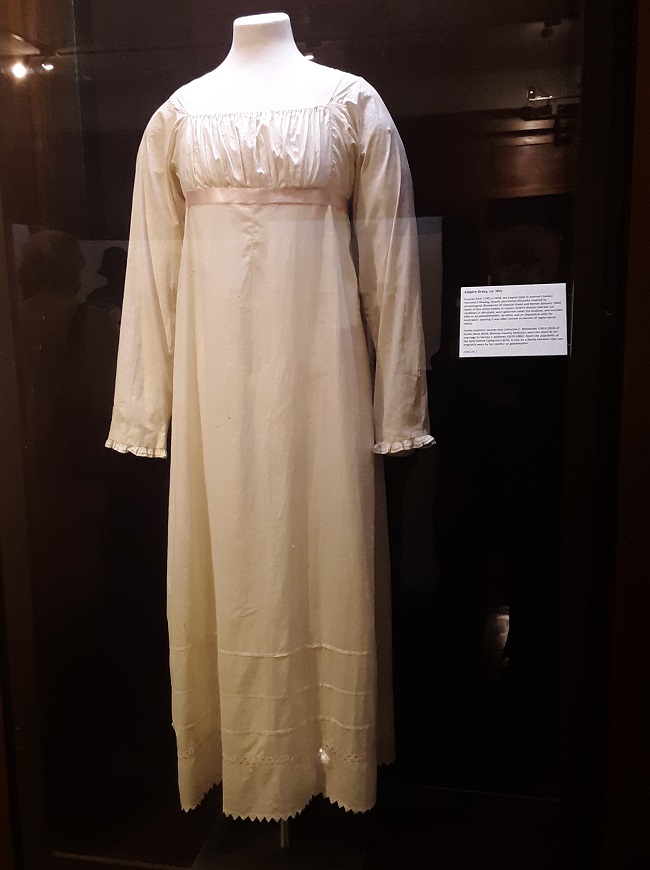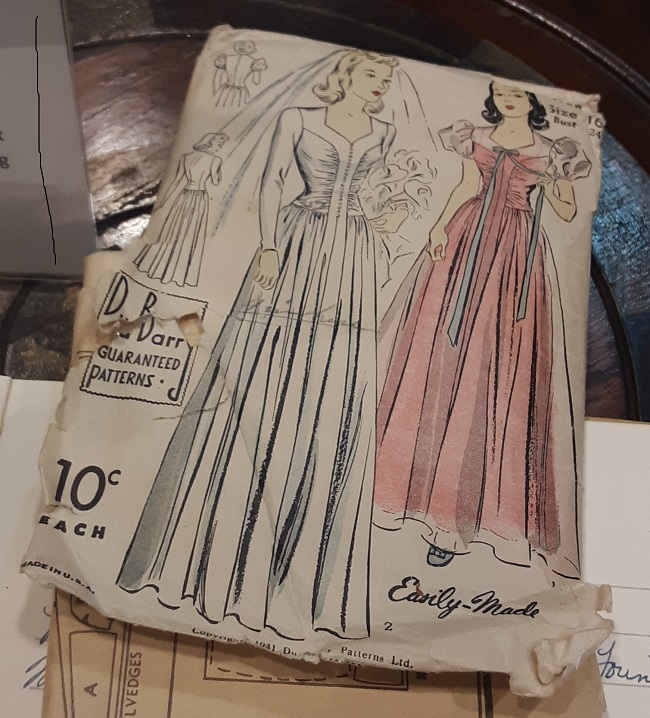
As part of the recent Costume Society of America Southeast Region Symposium, we were treated to a visit to the South Union Shaker Village. The Shakers are not to be confused with the Quakers, nor with the Amish, which we were told was a common misconception. I’m not going to go into a long explanation of who the Shakers were, but simply put, they were a Christian group that believed in celibacy and communal living. Like the Quakers, their religious practice involved physical movements. Unlike the Quakers, they lived in communal housing and were not married. They are confused with the Amish due to an emphasis on handcrafted items and “old-fashioned” clothing. In the case of the Amish, they are associated with a way of life that does not include modern technology.
The Shakers embraced technology. Their craftsmanship came about through need of furnishings. Once they could buy things more cheaply, they made fewer of their belongings. As for the clothing, the Shakers adhered to a dress code of sorts, but they were aware of changing fashions and made modifications to their dress. They look old-fashioned to us because by the turn of the twentieth century, the Shakers were dying out. Most of our images of them show them in their nineteenth century clothing.
This large building is the Center House where the Shakers all lived, women on one side and men on the other. There was a kitchen, dining room, infirmary, and laundry in this building as well. Construction began in 1822, and this was always the main building in the village. Unfortunately when the village closed in the early 1920s, the land and buildings were sold and many were torn down.
There were several huge auctions of the contents of the buildings, and so the Shakers’ things were dispersed throughout the region. When interest in restoring the remaining buildings happened in the 1960s, the non-profit in charge began collecting back things that were made or used in the Shaker Village. This task was helped by the organizational habits of the Shakers. They believed that everything had a proper place, and things were labeled to show where things belonged.

A great example was in their textiles. Over the early years of the village the Shaker women produced wool, cotton, linen, and even silk textiles. Each was identified as to where it was used and stored.


We were quite privileged to see these textiles as they are not normally on display. The director got them out of storage just for our group.


Of particular interest were the silk kerchiefs. The Shakers began working with silk worms starting in the 1820s, and the project was mildly successful at South Union. In 1832 they had produced enough silk fabric to make each female member a silk kerchief, and each male member a silk tie.
As you can see, the Shakers were not opposed to using color in their clothing. They used both natural, and when they became available, aniline dyes.


After manufactured textiles became available, the Shakers started buying them instead of continuing with the labor-intensive process of making their own. Some of the equipment they used has been located and is on display in the Center House.

In the early years of South Union, the rooms and furnishings must have looked similar to this room. Most of the furnishings seem to be made by the Shakers.

As time went on and the Shakers were able to purchase goods, their rooms looked more like fashionable Victorian bedrooms. In the process of buying back the items that were used at South Union, items that were not made by the Shakers were also acquired. The re-acquisition started about only forty years after the village broke up, so they were able to buy back many items from the people who had bought them from the auctions in the early 1920s.

When not in use, chairs were hung on pegs to get them out of the way.

Before visiting South Union, I reread the wonderful Shaker Textile Arts by Beverly Gordon. It really helped me understand what I was seeing during the visit. There are Shaker villages scattered throughout the Northeast and eastern Midwest. Another one in Kentucky is Pleasant Hill. It even allows for overnight stays. I highly recommend it.












































































